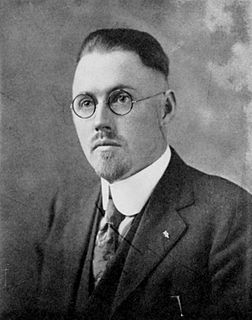
The United States presidential election of 1876 was the 23rd quadrennial presidential election, held on Tuesday, November 7, 1876. It was one of the most contentious and controversial presidential elections in American history, and is known for being the catalyst for the end of Reconstruction. Republican nominee Rutherford B. Hayes faced Democrat Samuel J. Tilden. After a controversial post-election process, Hayes was declared the winner.
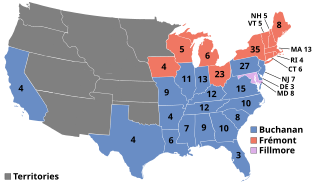
The United States presidential election of 1856 was the 18th quadrennial presidential election, held on Tuesday, November 4, 1856. In a three-way election, Democrat James Buchanan defeated Republican nominee John C. Frémont and American Party nominee Millard Fillmore.

The United States presidential election of 1884 was the 25th quadrennial presidential election, held on Tuesday, November 4, 1884. It saw the first election of a Democrat as President of the United States since the 1856. Governor Grover Cleveland of New York defeated Republican James G. Blaine of Maine.

The United States presidential election of 1888 was the 26th quadrennial presidential election, held on Tuesday, November 6, 1888. Republican nominee Benjamin Harrison, a former Senator from Indiana, defeated incumbent Democratic President Grover Cleveland of New York. It was the third of five U.S. presidential elections in which the winner did not win a plurality or majority of the national popular vote.

The United States presidential election of 1908 was the 31st quadrennial presidential election, held on Tuesday, November 3, 1908. Secretary of War and Republican Party nominee William Howard Taft defeated three-time Democratic nominee William Jennings Bryan.
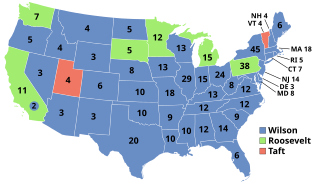
The United States presidential election of 1912 was the 32nd quadrennial presidential election, held on Tuesday, November 5, 1912. Democratic Governor Woodrow Wilson of New Jersey unseated incumbent Republican President William Howard Taft and defeated former President Theodore Roosevelt, who ran as the Progressive Party nominee. Roosevelt remains the only third party presidential candidate in U.S. history to finish better than third in the popular or electoral vote.
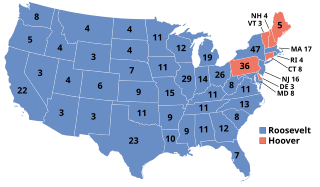
The United States presidential election of 1932 was the thirty-seventh quadrennial presidential election, held on Tuesday, November 8, 1932. The election took place against the backdrop of the Great Depression. Incumbent Republican President Herbert Hoover was defeated in a landslide by Democrat Franklin D. Roosevelt, the Governor of New York. The election marked the effective end of the Fourth Party System, which had been dominated by Republicans.

The 1972 United States presidential election was the 47th quadrennial presidential election. It was held on Tuesday, November 7, 1972. Incumbent Republican President Richard Nixon defeated Democratic Senator George McGovern of South Dakota.

Alfred Mossman Landon was an American politician from the Republican Party. He served as the twenty-sixth Governor of Kansas from 1933 to 1937. He was the Republican Party's nominee in the 1936 presidential election, but was defeated in a landslide by incumbent President Franklin D. Roosevelt who won the electoral college vote 523 to 8.

The 2004 Washington gubernatorial election on November 2, 2004 gained national attention for its legal twists and extremely close finish. In what was notable for being among the closest political races in United States election history, Republican Dino Rossi was declared the winner in the initial automated count and again in the subsequent automated recount. It wasn't until after the third count, a second recount done by hand, that Christine Gregoire, a Democrat, took the lead by a margin of 129 votes.

The New York gubernatorial election of 2010 was held on Tuesday, November 2, 2010. Incumbent Democratic Governor David Paterson, elected as Lieutenant Governor in 2006 as the running mate of Eliot Spitzer, chose not to run for a full term. Democratic New York Attorney General Andrew Cuomo defeated Republican Carl Paladino to become the next Governor of New York.
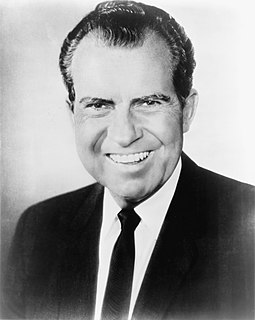
The 1968 Republican presidential primaries were the selection process by which voters of the Republican Party chose its nominee for President of the United States in the 1968 U.S. presidential election. Former Vice President Richard Nixon was selected as the nominee through a series of primary elections and caucuses culminating in the 1968 Republican National Convention held from August 5 to August 8, 1968, in Miami Beach, Florida.
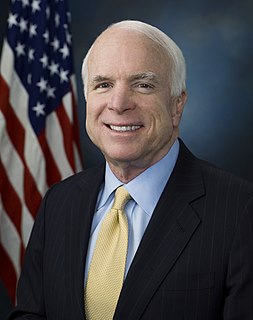
The 2008 United States presidential election in Missouri was held on November 4, 2008, and was part of the 2008 United States presidential election, which took place throughout all 50 states and D.C. Voters chose 11 representatives, or electors to the Electoral College, who voted for president and vice president.
Electoral history of Richard Nixon, 37th President of the United States (1969–1974), 36th Vice President of the United States (1953–1961); United States Senator (1950–1953) and United States Representative (1947–1950) from California.

The 2010 United States Senate election in Alaska took place on November 2, 2010, alongside 33 other U.S. Senate elections in other states, as well as elections in all states for Representatives to the U.S. House, and various state and local offices.

The 2016 North Carolina gubernatorial election was held on November 8, 2016, to elect the Governor of North Carolina, concurrently with the 2016 U.S. presidential election, as well as elections to the United States Senate and elections to the United States House of Representatives and various state and local elections.

The 1932 Kansas gubernatorial election took place on November 8, 1932. Democrat Harry H. Woodring, the incumbent Governor of Kansas, was defeated by Alf Landon, a Republican. Landon polled 34.82%, Woodring 34.14%, and John R. Brinkley, an independent, polled 30.58%.








